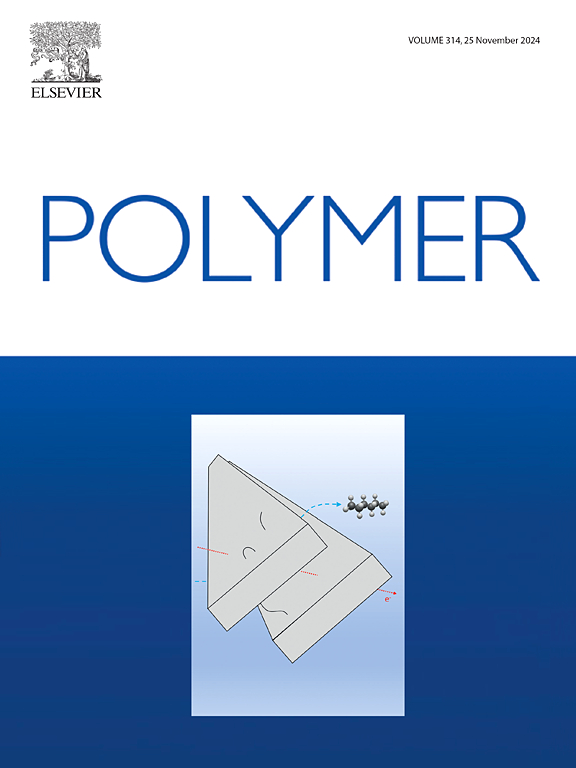Processability of poly(amic acid) gel films
IF 4.1
2区 化学
Q2 POLYMER SCIENCE
引用次数: 0
Abstract
During the high-temperature drawing process of polyimide (PI) films, simultaneously changing the physicochemical structure of the films and implementing intricate process control is a complex problem. In this study, the PI precursor poly(amic acid) (PAA) was condensed from pyromellitic dianhydride (PMDA) and 4,4′-diaminodiphenyl ether (ODA) and its transformation from solution to gel and then to the glassy state was investigated using isothermal thermogravimetry, isothermal dynamic mechanical analysis, and differential scanning calorimetry. The experimental results were combined with molecular simulation results to determine the diffusion behaviors and related mechanisms of the solvents and chain segments. After investigating the effects of the solvent system, temperature, and solid content on the processability of PAA gel films, the processing window was identified on a two-dimensional parameter map (temperature versus solid content), which was divided into three regions with distinct processabilities. Both N,N′-dimethylacetamide (DMAc) and N-methylpyrrolidone (NMP) solvent systems exhibited a highly elastic gel state within a broad range of solid contents and temperatures but the NMP system demonstrated better processability, with an elongation rate exceeding 120 % within the 110°C-135 °C range and no chemical structural transformation from PAA to PI. This study successfully realizes a high-elastic gel state of PAA without relying on other chemical reagents. The proposed research idea and technical approach is expected to realize low-temperature drawing processing of PI films.


求助全文
约1分钟内获得全文
求助全文
来源期刊

Polymer
化学-高分子科学
CiteScore
7.90
自引率
8.70%
发文量
959
审稿时长
32 days
期刊介绍:
Polymer is an interdisciplinary journal dedicated to publishing innovative and significant advances in Polymer Physics, Chemistry and Technology. We welcome submissions on polymer hybrids, nanocomposites, characterisation and self-assembly. Polymer also publishes work on the technological application of polymers in energy and optoelectronics.
The main scope is covered but not limited to the following core areas:
Polymer Materials
Nanocomposites and hybrid nanomaterials
Polymer blends, films, fibres, networks and porous materials
Physical Characterization
Characterisation, modelling and simulation* of molecular and materials properties in bulk, solution, and thin films
Polymer Engineering
Advanced multiscale processing methods
Polymer Synthesis, Modification and Self-assembly
Including designer polymer architectures, mechanisms and kinetics, and supramolecular polymerization
Technological Applications
Polymers for energy generation and storage
Polymer membranes for separation technology
Polymers for opto- and microelectronics.
 求助内容:
求助内容: 应助结果提醒方式:
应助结果提醒方式:


